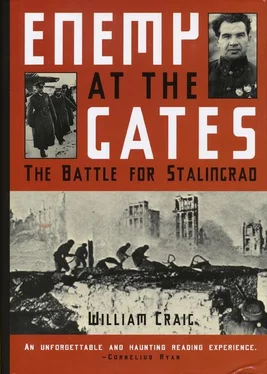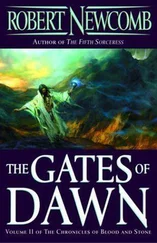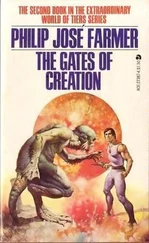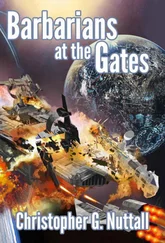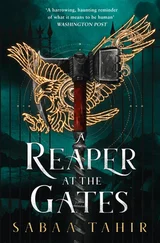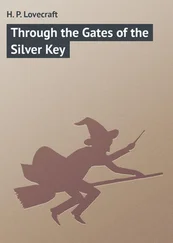Once a German tank had approached and, under a white flag, an officer and interpreter cautiously asked for their surrender to the “heroic German Army.” The Russians shouted, “Go to hell!” warning the intruders to leave the tank behind and get out. When the Germans tried to jump into the vehicle, the marines blew it up.
For the next three days, German artillery pounded the stronghold, set the grain on fire with incendiary shells, and riddled the tower itself with high explosives. German infantrymen broke in and crept up the stairs, but the defenders managed to drive them back with knives, fists, and bullets.
Now, on the night of September 20, the exhausted garrison was almost out of ammunition, and the water supply had been used up completely. In a frantic search for something to drink, Lt. Khoyzyanov led his men out the tower door, across the field, a main road, and into a gully, where they stumbled on an enemy mortar battery. In the resulting melee, the startled Germans fled, leaving behind gallons of ice-cold water that the marines gulped down gratefully.
Completely dehydrated, Khoyzyanov suddenly felt faint from the water and collapsed on the ground. When he woke up, he was in a dark cellar. The shoe was gone from his right foot; his shirt was off. His head felt light and he could not move his arms and legs. Standing guard over him was a soldier from the German 14th Panzer Division. The grain elevator he had defended so heroically had passed into enemy hands. The Germans quickly put out the fires and saved most of the wheat, which would be significant in weeks to come.
A mile to the north, in another Russian strongpoint just off Red Square, Anton Dragan still occupied the nail factory. But when a Russian woman, Maria Vadeneyeva, ran through machine-gun fire to tell him the Germans were bringing up tanks, he knew his hours there were numbered.
On September 21, Dragan came under intense pressure. Enemy tanks and planes battered the building and forced a wedge between his company and the rest of the 1st Battalion of the 13th Guards, strung out across Red Square. By late afternoon, Dragan was nearly cut off from his countrymen.
At the Univermag Department Store, the Germans concentrated on battalion headquarters and killed nearly every Russian there. Dragan tried to send help, but the headquarters had been demolished and the staff annihilated. Dragan then took command of the battalion and sent a courier back to the Volga with a message for Colonel Yelin, the regimental commander. The courier died on the way, and in the 42nd Regiment bunker on the Volga shoreline. Yelin marked the entire 1st Battalion destroyed somewhere in the area of Red Square.
But Dragan was still alive. Leading his troops from building to building, he gave ground only when the Germans set fire to his hiding places. The battle raged past the fountain with its statues of children dancing in a circle around a crocodile, past Pravda, the City Soviet, the theater, and the bodies hanging in the hedges around the obelisk commemorating the fallen from the Civil War of 1918. At the intersection of Krasnopiterskaya and Komsomolskaya streets, Dragan brought the remnants of his shattered battalion into the basement of a three-storey apartment house. Scattering the surviving forty men around window openings, he sat behind a heavy machine gun and waited to die.
From the far-off Urals, more reinforcements had been rushed to the beleaguered city. And from the farthest reaches of Siberia, the 284th Division, under Col. Nikolai Batyuk, came with orders to move to the Volga crossing.
A Ukrainian of medium height, slim, with dark hair combed straight back, Batyuk suffered from a serious circulatory ailment and frequently had to be carried on the back of one of his aides. He did this only at night so his troops would not be aware of his weakness. An obviously determined man, on arrival he told Chuikov: “I came here to fight the Nazis, not for a parade.”
Few in Batyuk’s division wanted this battle. Mostly raw recruits, they were willing to fight the Nazis—but not at Stalingrad. Lt. Pyotr Deriabin agreed. Already badly wounded at Moscow, he had no illusions about what awaited his men in the burning city.
At Krasnofimsk, in the Urals, a hard core of veterans like Deriabin had taught their skills to eighteen- and nineteen-year-old boys, most of whom were Orientals from the Mongolian border area and had never seen a German. Then they marched and drove nearly seven hundred miles westward, chewing the roots of the smolka plant, a licorce-tasting substitute for gum, and gulping down whatever vodka they could find on the way. At Kamyshin they gorged on watermelon, the best grown in Russia and the pride of the town, then climbed into Studebaker trucks, which transported them the rest of the way to the Volga.
They began crossing the river on the misty morning of September 22. It was hours before the first group landed in the fiery city, and though German planes pounded them they survived the run in good shape. Deriabin tumbled into the Dolgy Ravine, and promptly fell into a troubled sleep. When he awoke, he went on to the Lazur Chemical Plant in the middle of the railroad loop between the riverbank and the slopes of Mamaev Hill, where the Germans were fighting furiously with the 13th Guards. The crest had changed hands countless times, but the Germans were still able to look down the throats of the new men from the 284th as they took position.
Alexei Petrov came across the Volga and was assigned to the northern sector near Latashanka. For ten days he had been given hurried instructions in the use of a .122-millimeter cannon, but with time running out, the exasperated instructor finally told him to teach himself. As best he could, Petrov mastered the techniques of firing the heavy weapon that had a range of nearly six miles.
The squat, wavy-haired sergeant had spent months as a construction worker in Kuibyshev before being drafted. There he unexpectedly met his brother, who told him the rest of his family— his mother, father, and sister—had been swallowed up in the Ukraine by the German advance. They had not been heard from in more than a year.
When ordered into Stalingrad, Petrov went to the dock and saw that the other shore of the Volga was a solid wall of flames. Though scared to death, he knew he would go across. But other Russians would not, and Petrov watched as NKVD guards fired in the air over the deserters, and then killed them when they ran from the landing. After Alexei climbed on board the barge, the NKVD took no further chances. Guards lined the rails to prevent anyone from jumping overboard.
Bombers came over, seeking out the steamers and tugs. German mortars behind Mamaev reached out for them, and Petrov cursed the slowness of the voyage as the river froze in a midday tableau. Feeling trapped and vulnerable, he crouched down to hide from shrapnel singing by his ears. Men slipped off the sides to drown. Bullets thudded into flesh and soldiers sagged against neighbors and died without a word. Petrov saw the Volga water clearly. It was a swirling mixture of water and bright red blood.
His boat took nearly two hours to reach a landing site under the cliff. While the dead covered the deck, the living scrambled off. Nearly half of Petrov’s regiment had died crossing the river.
Because most of his unit was already dead, he now had to fight as an infantryman. His baptism to war was brutal. Three scouts went ahead to gauge German strength. Two came back. Petrov picked up his field glasses and scanned no-man’s-land for the missing man.
He was out there, spread-eagled on the ground. The Germans had thrust a bayonetted rifle into his stomach and left him face up in the open. Petrov and his squad went berserk. Screaming hoarsely, they jumped from their holes and ran forward. Bursting into a line of houses, they killed anyone who rose before them. When several Germans raised their hands in surrender, Petrov squeezed the trigger of his tommy gun and killed them all.
Читать дальше
